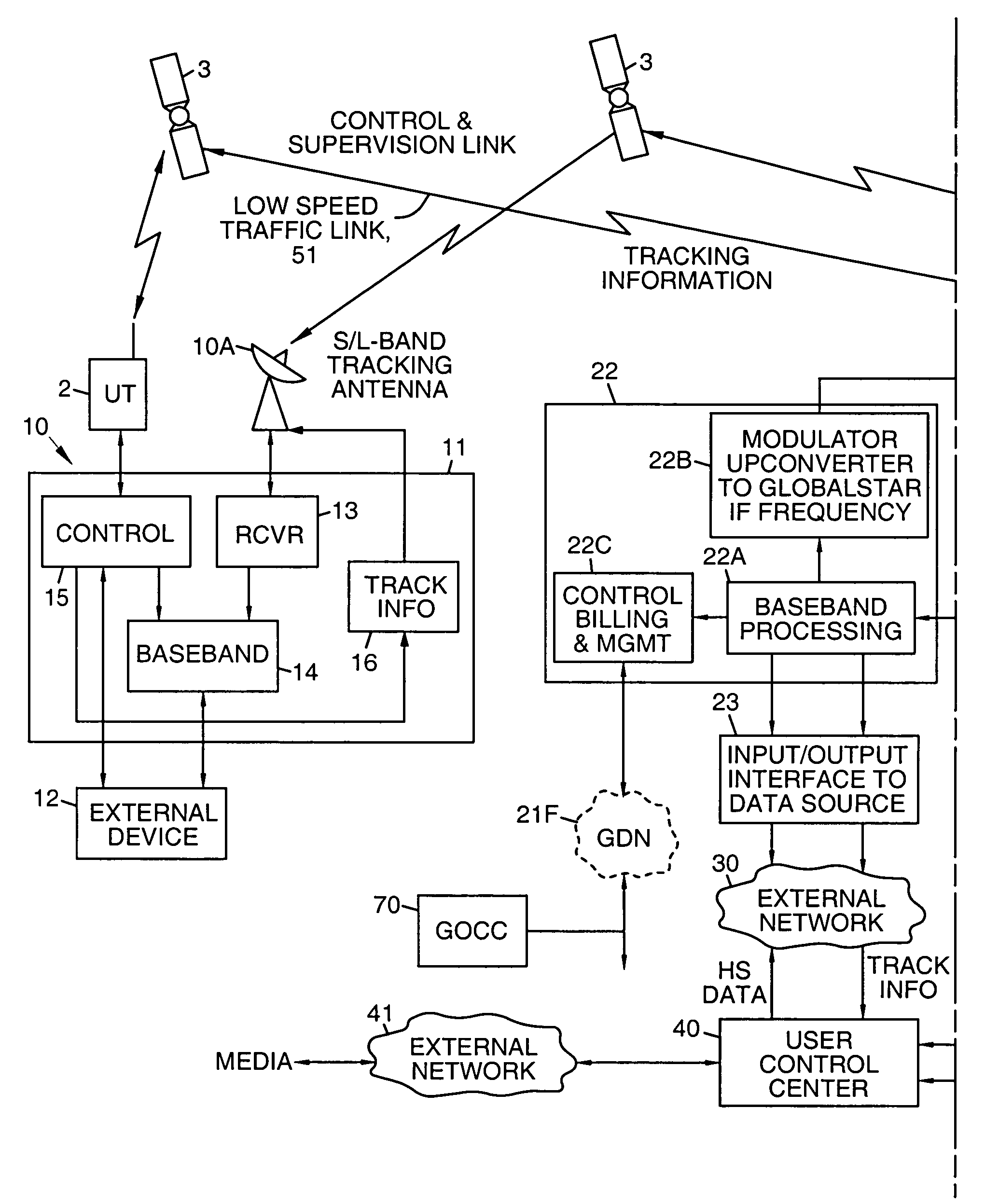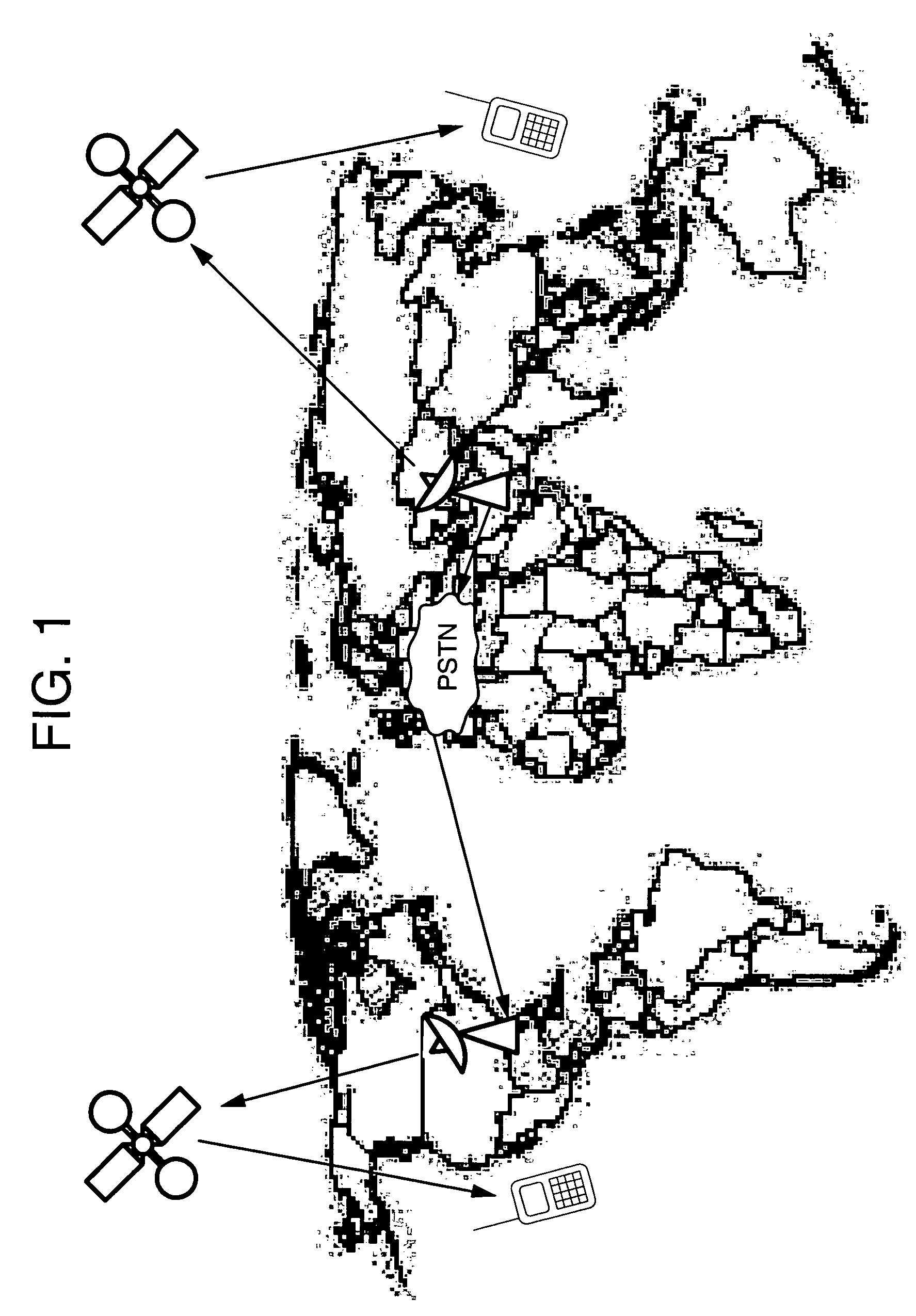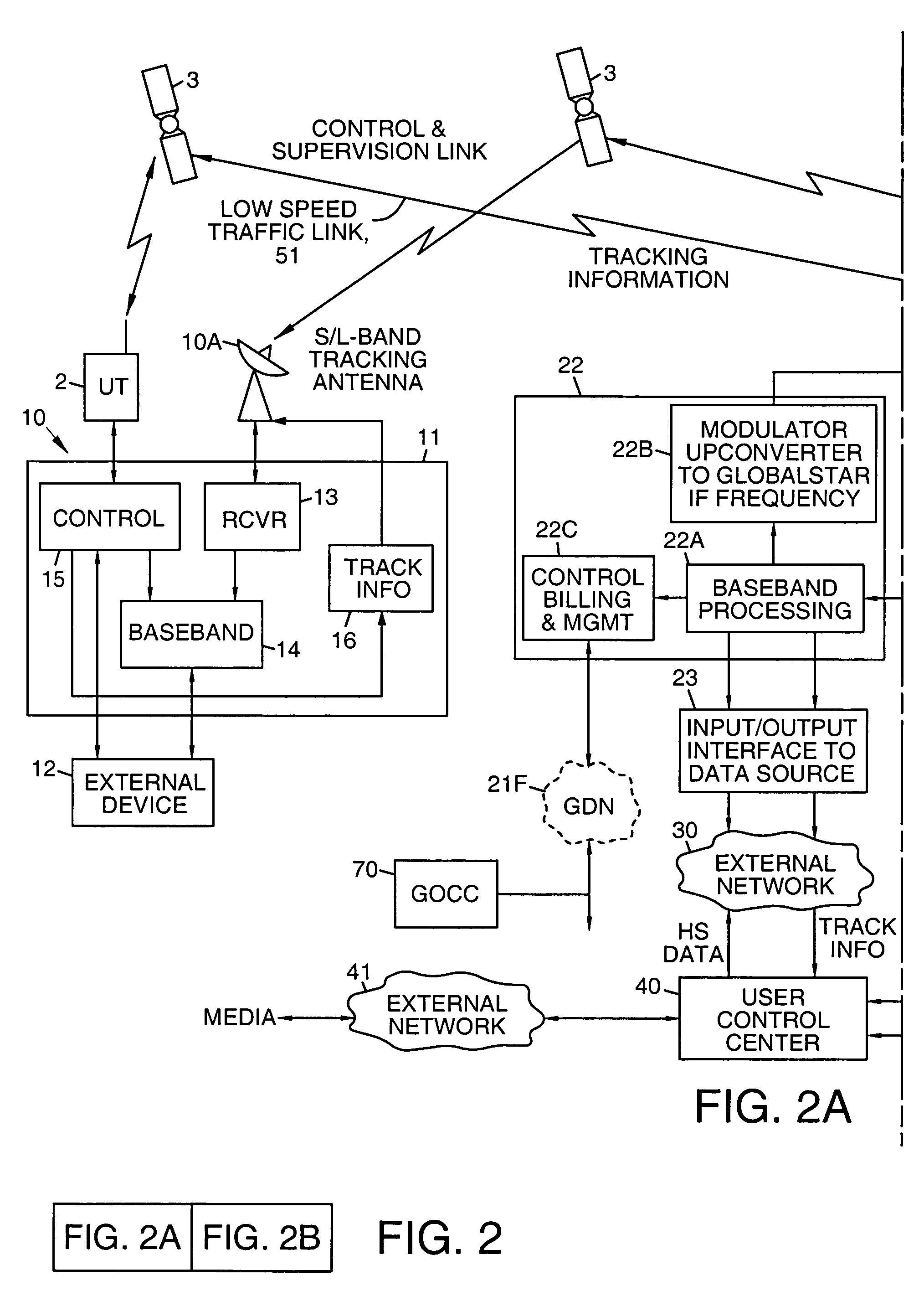Satellite communication system for communicating packet data messages
a packet data and satellite communication technology, applied in the field of satellite communication systems for communicating packet data messages, can solve the problems of cellular phone subscribers exceeding one million, crowded airwaves, and inability to meet the needs of users,
- Summary
- Abstract
- Description
- Claims
- Application Information
AI Technical Summary
Benefits of technology
Problems solved by technology
Method used
Image
Examples
example 1
[0085]User 1 dials user 2's number which generates a request to a satellite in user 1's view. The satellite relays the signal down to a gateway Earth station within the satellite's view. The gateway then processes the signal and routes the call to an existing PSTN or Internet in the locality. The PSTN or Internet then routes the call to the gateway in which the user is registered to receive the call, the gateway then transmits the signal up to a satellite in view and that satellite relays the signal down to U2, the receiving party. Either user 1 or 2 may initiate or receive packet data messages.
[0086]While the present invention has been particularly described with respect to certain components in its preferred embodiment, it will be understood that the invention is not limited to these particular components described in the preferred embodiments, or the sequence in employing or methods of processing the components. On the contrary, it is intended to cover all alternatives, modificat...
PUM
 Login to View More
Login to View More Abstract
Description
Claims
Application Information
 Login to View More
Login to View More - R&D
- Intellectual Property
- Life Sciences
- Materials
- Tech Scout
- Unparalleled Data Quality
- Higher Quality Content
- 60% Fewer Hallucinations
Browse by: Latest US Patents, China's latest patents, Technical Efficacy Thesaurus, Application Domain, Technology Topic, Popular Technical Reports.
© 2025 PatSnap. All rights reserved.Legal|Privacy policy|Modern Slavery Act Transparency Statement|Sitemap|About US| Contact US: help@patsnap.com



